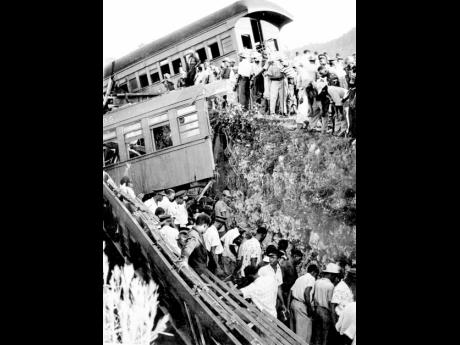Jamaica Railway – chugging down memory lane
This is a question that has been asked numerous times in the past. Let us ask IT again: What is romance? Surely, beyond the realm of the obvious of the mushiness and those dimpled emoticons, there are instances, manifestations, and experiences that evoke the same feelings.
Mention the word railways, and those who have experienced and used that mode of transportation can swear that it is not merely a mode of transportation take you from Point A to Point B – travelling in the train has an inexplicable adrenaline rush and gushing of emotions. Such an experience in Jamaica may have long gone into the pages of history, but the island can be proud of its rich railway history beyond the fading façade and shrub-encased remnants.
The history of railway in Jamaica travels back to David and William Smith – the enterprising men who said that they saw the immense potential of an internal transport system for development in Jamaica, particularly in the area of agriculture – who initiated the move to bring the railway. The greatest internal stimulus came from the increasing investment stimulus in British Railways, which, at the time, raised a whopping £222,250.
Construction on the first railway lines began in in 1844 after the first public railway in Britain was built. This gave Jamaica the distinction of being the first railway to be constructed in a British colony. The Jamaica Railway Company, formed by the Smith brothers, built the first section of the railway systems, which extended from Kingston to Angels in Spanish Town, St Catherine.
It was opened on November 21, 1845, by then Governor of Jamaica Lord Elgin. The line was extended from Spanish Town to Old Harbour in 1869.
The Jamaican Government was keen to see further extensions, however, efforts to have the company provide the required capital failed. The Government bought the railway in 1879 for £93,932 and renamed it the Jamaica Government Railway.
CONTINUOUS EXTENSION
Under the new ownership, there was continuous extension of the system, which included the extension of the routes from Old Harbour to Porus in Manchester and from Angels to Ewarton, St Catherine. The system was sold to an American Syndicate, West India Improvement Company. A condition of the sale was that extensions from Porus to Montego Bay and from Bog Walk to Port Antonio should be carried out at the buyer’s expense.
In 1898, the syndicate was unable to pay the interest due on their mortgage, and under a ruling from the Supreme Court, the Government took over the railway in April 1900. Expansion of the railway system continued for several years.
Between 1900 and 1950, less than 80 kilometres of track was added, mainly to support the opening of the interior to banana cultivation. Post-World War II, the agricultural- driven growth of the railways was created by the interior geography, and developing consumer needs meant that bananas had to be on a ship only two days after cutting.
Having shipped 330,000 stems in 1880 to 24 million stems in 1930, a progressive decline in the industry meant that by 1969, the transport of bananas by rail ceased. In 1895, Jamaica had exported 97 million fruits. By 1940, the figure had fallen to 40 million, and following the loss of the monopoly of the British market and the 1951 hurricane, in 1975, it was just 5 million. Passenger figures had also started to fall as pre-World War II, the Government had started a bridge-building programme. By 1971, Jamaica had 11,590 kilometres of roads, 1,350 of which were paved, alongside buses, which were accessing further inland. Also, the number of private cars had increased from 15,000 in 1950 to 142,300 by 1975.
KENDAL CRASH
On Sunday, September 1, 1957, just before midnight, the quiet little village of Kendal in Manchester became the scene of the world’s second worst rail disaster up to that time.
At around 11.30 p.m. on that fateful Sunday night, as the train approached Kendal, Manchester, the train got out of control on a steep mile-long falling gradient. The engines chuffed at about 55 miles per hour at the foot of the incline and lost control. The lead coach overturned to the right on a sharp left-hand curve. What ensued was mayhem. The crash claimed the lives of almost 200 people and approximately 500 others suffered serious injuries. The Jamaica Railway Corporation was formed on April 1, 1960, and continued to operate, with numerous challenges.
The railway ceased public-passenger service in 1992 and reopened, offering limited public-passenger service – from Spanish Town to Charlemont, via Linstead, St Catherine – in 2011, and later closed in August 2012.
There are suggestions that the railway service will be revived – hen, we don’t know – but at the end of it all, a rail aficionado would vouch that there is something about the railway that would make you fall in love with it.
Information researched and sourced by Sheree Rhoden, librarian, The Gleaner Co (Media) Ltd.
The Gleaner Library is a rich repository of archival material – newspaper clippings, articles, photographs, cartoons. To purchase the featured photographs or other archival materials, please contact us at 876-932-6231 or email library@gleanerjm.com.

